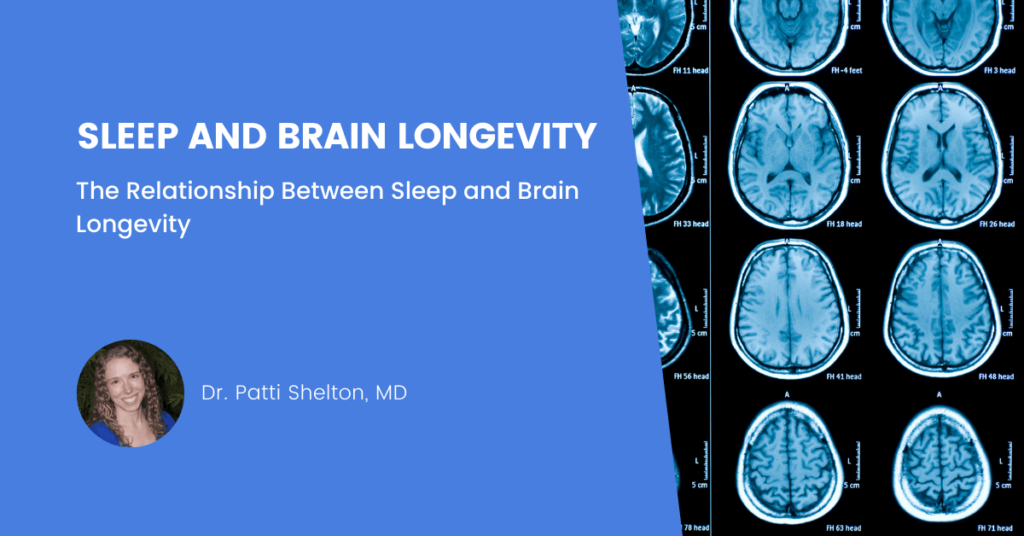- 8 Surprising Benefits of Coherence Meditation that Change Lives - September 25, 2022
- Heart Coherence and Biofeedback Meditation – the Complete Guide - September 21, 2022
- The Anti-aging Power of Meditation: Which Type is the Best for Longevity? - May 29, 2022
If you’re hoping to increase your healthspan, one of the best tools available to you is sleep. Unfortunately, the modern world doesn’t necessarily tend to value sleep. Many people try to sleep as little as they can get away with. Some people even wear their sleep deprivation as a badge of honor – it shows how busy and important they are.
However, sleep is worth prioritizing, because it has a huge impact on your health across many domains. From secretion of crucial hormones like human growth hormone, to promotion of autophagy, sleep has a variety of benefits that can improve longevity. It’s well-established that sleep deprivation decreases healthspan in many different ways.
In this article, we’ll focus on how sleep helps protect our brain. Recent discoveries have elucidated sleep’s crucial role in protecting the brain from the degenerative process known as dementia (of which Alzheimer’s disease is the most well-known type). Unfortunately, dementia is a fairly common cause of a decreased healthspan, affecting more than 20% of adults in their 80s and older[1]. Maintaining your cognitive health is a very important step in being able to fully enjoy your life into your ninth decade and beyond.
For many years, doctors noticed that people with dementia sleep less than others. At first, they assumed that this is because dementia impacts the brain in a way that interferes with sleep – in other words, dementia causes lack of sleep. And it’s certainly true that it does; the progressive brain damage of dementia eats away at the brain’s ability to do virtually everything, including sleep. Eventually, though, people started to ask whether the causation might also go the other way, with lack of sleep leading to dementia.
The more that this question was investigated, the more true it seemed to be. People who get enough sleep have a much lower risk of dementia over the following years[2]. Sleep protects the brain from the process of degeneration that leads to dementia.
How does sleep impact your brain health? And how do you know if you’re getting enough? To understand the answer, let’s first consider the structure of sleep itself.
A short primer on sleep architecture
Far from being a period where we simply turn off, sleep is actually an active process, with several different stages. The organization of these stages is known as sleep architecture.
There are two basic phases of sleep – REM sleep and non-REM (or NREM) sleep – which generally occur in predictable patterns throughout the night.
NREM Sleep – Decreased Brain Activity
When a person first falls asleep, they enter NREM first. Stage 1 is relatively light, and Stage 2 is a little deeper. We then enter the deepest phase of sleep, known as Stage 3 sleep or slow wave sleep. (Another way to refer to the three stages of NREM is as N1, N2, and N3. Slow wave sleep, Stage 3 sleep, and N3 all mean the same thing. Note that in the past, slow wave sleep was divided into Stage 3 and Stage 4, but they’re now collectively referred to just as Stage 3 or slow wave sleep.)
During slow wave sleep, an EEG (a recording of electrical signals from the brain) shows a predominance of delta waves, which are high-amplitude, low-frequency signals – large, slow waves of electrical activation throughout the brain. Memory consolidation is known to occur during this phase; that’s the process of reorganizing memories and transferring them into long-term storage[3].
If you’re awoken during this phase, it takes a while for brain activity to return to a waking pattern. You’ll feel the phenomenon known as sleep inertia – you’ll feel groggy and slow, and your performance will be measurably impaired for up to about half an hour[4]. If you find that you’re waking up groggy, then it’s likely that you’re being awoken during slow wave sleep – which is a sign that your sleep is being interrupted, because this isn’t a natural point during the sleep cycle for awakening to occur.
REM Sleep – High Levels of Brain Activity
After slow wave sleep, the brain moves back up through the levels, and then into the next phase, which is REM sleep. During REM sleep, the brain is so active that the EEG closely resembles a waking EEG. Although it’s actually a myth that we only dream during REM (there are also dreams during NREM), the dreams during REM are thought to be more vivid[5].
A sleep cycle is about 90 minutes long (although this can vary somewhat from person to person), and consists of NREM followed by REM sleep. Over the course of the night, the relative proportion of each type of sleep within a cycle tends to change. The earlier cycles are usually dominated by NREM, while later cycles contain more REM.
The proportions of sleep stages are adaptable
As with so many other biological processes, sleep is adaptable, and the proportions of the various sleep stages can vary depending on what the body and brain need. For example, it’s been known for years that when a person is sleep-deprived, then the next time they sleep, they’ll spend a longer amount of time in slow wave sleep, as the brain catches up on what it missed earlier[6]. This is an indication that slow wave sleep is particularly important, as the brain will prioritize it over other phases. There have also been studies showing that when people have learned something new while they were awake, they spend more time in slow wave sleep afterwards – this reflects slow wave sleep’s role in memory consolidation.
How does slow wave sleep impact brain health?
When it comes to the brain-protective, dementia-preventing effect of sleep, slow wave sleep appears to be the key. While research is still ongoing to figure out exactly how this works, some intriguing recent studies point to clearance of toxins from the brain as an important driver of the effect. To understand how this works, let’s look at how fluid circulates within the brain.
Two major fluid spaces within the brain work together to remove toxins
There are essentially two different types of fluid spaces in the brain. One is the cerebrospinal fluid, or CSF. This fluid is contained within certain compartments both within and outside of the brain and spinal cord. CSF is generated in one place and reabsorbed in a different one, which creates a directional flow of the fluid. It’s replaced about every seven to eight hours[7].
The other fluid space is called the interstitial space. This is the space in between neurons in the brain. Fluid here is known as interstitial fluid, or ISF. The flow of ISF is very different than that of CSF. While CSF circulates in a directional flow, ISF more or less just sloshes around. It moves wherever there happen to be tiny spaces between neurons, which means that it doesn’t always have much room to move.
Neurons, like all cells, are constantly generating toxins – this is an unavoidable byproduct of metabolism. These toxins end up in the ISF. From there, they make their way to the CSF, from which they can be transported into the bloodstream for removal by other organs. Getting rid of these toxins depends on the flow of ISF.
How does slow wave sleep impact the flow of ISF?
Recent discoveries have indicated that the flow of ISF is greatest during slow wave sleep[8]. It appears that during this phase of sleep, neurons shrink a little bit. This makes the spaces between the neurons bigger, which allows a greater flow of ISF through the brain. Throughout the day, as neurons go about their metabolic business, toxins build up in the ISF. There’s not enough space for the circulation of ISF to carry them away very efficiently while you’re awake. During slow wave sleep, the circulation of ISF increases, and these toxins are able to be removed.
How does slow wave sleep impact the flow of CSF?
Other recent studies have found that, during sleep, oscillations in the flow of blood and CSF within the brain are generated[9]. Fascinatingly, it looks like it’s the activity of the neurons themselves that generates these oscillations. As the slow waves of activation gradually sweep through the brain, alterations in blood flow naturally follow in waves. This generates a corresponding wave in the flow of CSF as well. As the waves of CSF flow through the brain, they pick up toxins from the ISF and clear them away.
The buildup of toxins may be associated with the development of dementia
People with Alzheimer’s disease have a buildup of certain protein byproducts within the brain. These are thought to be waste products, which have not been effectively cleared and have therefore built up in brain tissue. There’s still quite a bit of argument about whether these constitute a cause or an effect of dementia – or perhaps a little of both.
What we know for sure is that the brain clears toxins away during slow wave sleep, and that sleep protects against dementia. If you’re hoping to live a long and cognitively healthy life, then sleep is non-negotiable. Getting enough slow wave sleep is necessary for the brain to perform the maintenance that it needs in order to continue to function well.
But how do you know whether you’re getting enough sleep, and particularly enough slow wave sleep? We’ll explore that question in the next article, with some 12 Evidence-based Tips for Optimizing Your Sleep.
References
- National Health and Aging Trends Study Chart Book https://micda.isr.umich.edu/wp-content/uploads/2022/03/NHATS-Companion-Chartbook-to-Trends-Dashboards-2020.pdf
- Sabia, S., Fayosse, A., Dumurgier, J. et al. Association of sleep duration in middle and old age with incidence of dementia. Nat Commun 12, 2289 (2021). https://doi.org/10.1038/s41467-021-22354-2
- Diekelmann, S., Born, J. Slow-wave sleep takes the leading role in memory reorganization. Nat Rev Neurosci 11, 218 (2010). https://doi.org/10.1038/nrn2762-c2
- Sleep inertia: current insights https://www.dovepress.com/sleep-inertia-current-insights-peer-reviewed-fulltext-article-NSS
- Dreaming in NREM Sleep: A High-Density EEG Study of Slow Waves and Spindles
Francesca Siclari, Giulio Bernardi, Jacinthe Cataldi and Giulio Tononi
Journal of Neuroscience 24 October 2018, 38 (43) 9175-9185; DOI: https://doi.org/10.1523/JNEUROSCI.0855-18.2018 - Rodriguez AV, Funk CM, Vyazovskiy VV, Nir Y, Tononi G, Cirelli C. Why Does Sleep Slow-Wave Activity Increase After Extended Wake? Assessing the Effects of Increased Cortical Firing During Wake and Sleep. J Neurosci. 2016;36(49):12436-12447. doi:10.1523/JNEUROSCI.1614-16.2016
- Huff T, Tadi P, Varacallo M. Neuroanatomy, Cerebrospinal Fluid. [Updated 2021 Oct 21]. In: StatPearls [Internet]. Treasure Island (FL): StatPearls Publishing; 2022 Jan-. Available from: https://www.ncbi.nlm.nih.gov/books/NBK470578/
- Shetty AK, Zanirati G. The Interstitial System of the Brain in Health and Disease. Aging Dis. 2020 Feb 1;11(1):200-211. doi: 10.14336/AD.2020.0103. PMID: 32010493; PMCID: PMC6961771.
- Coupled electrophysiological, hemodynamic, and cerebrospinal fluid oscillations in human sleep DOI: 10.1126/science.aax5440


